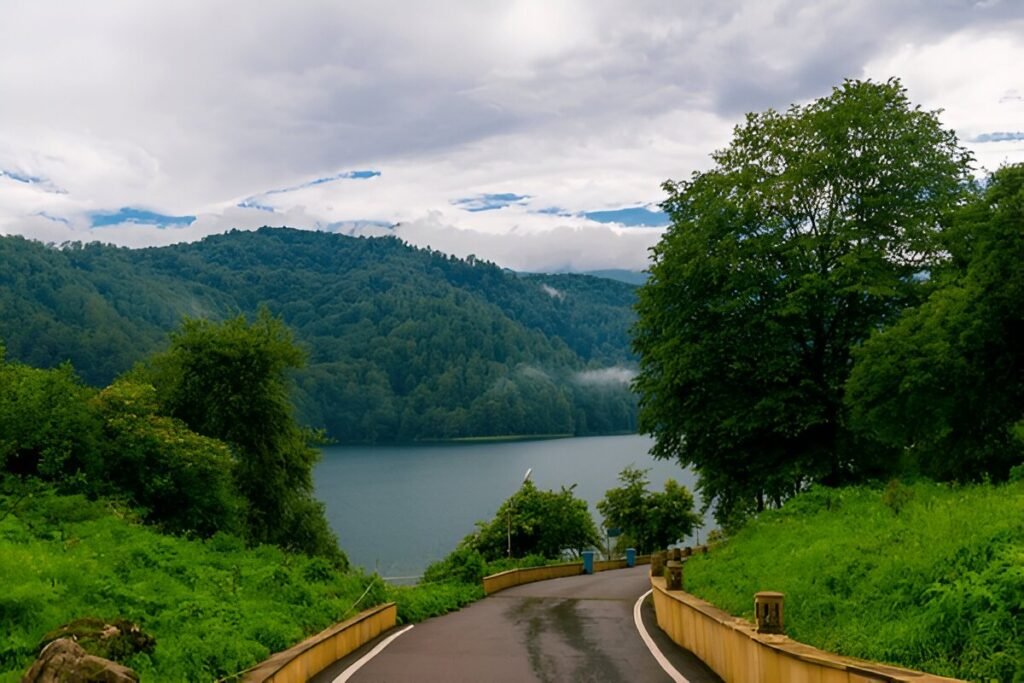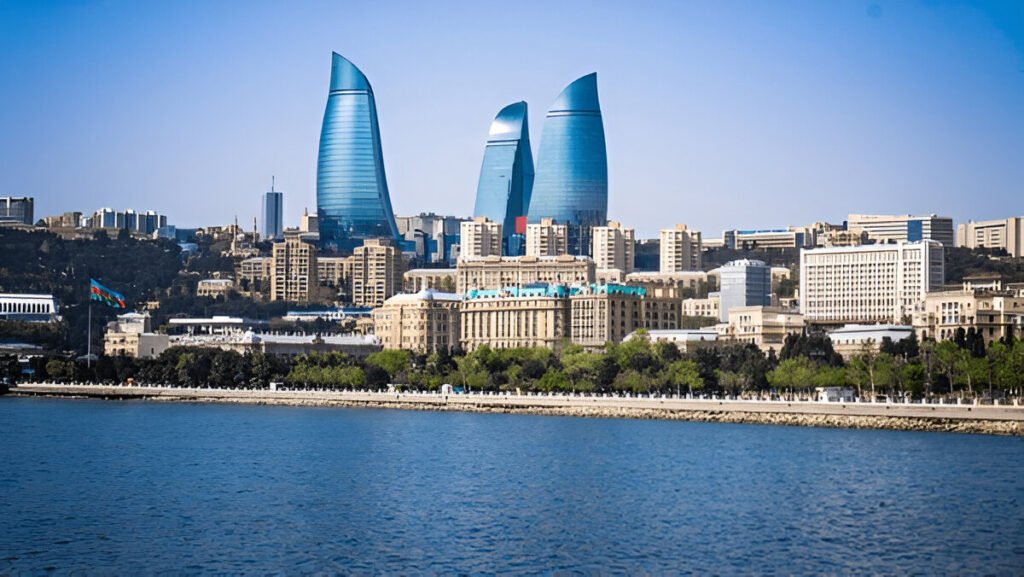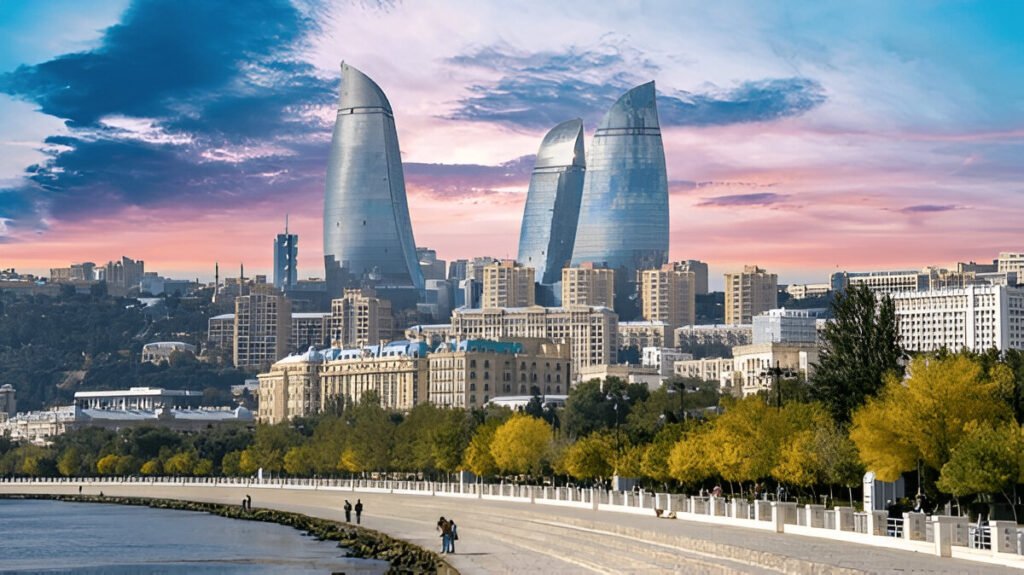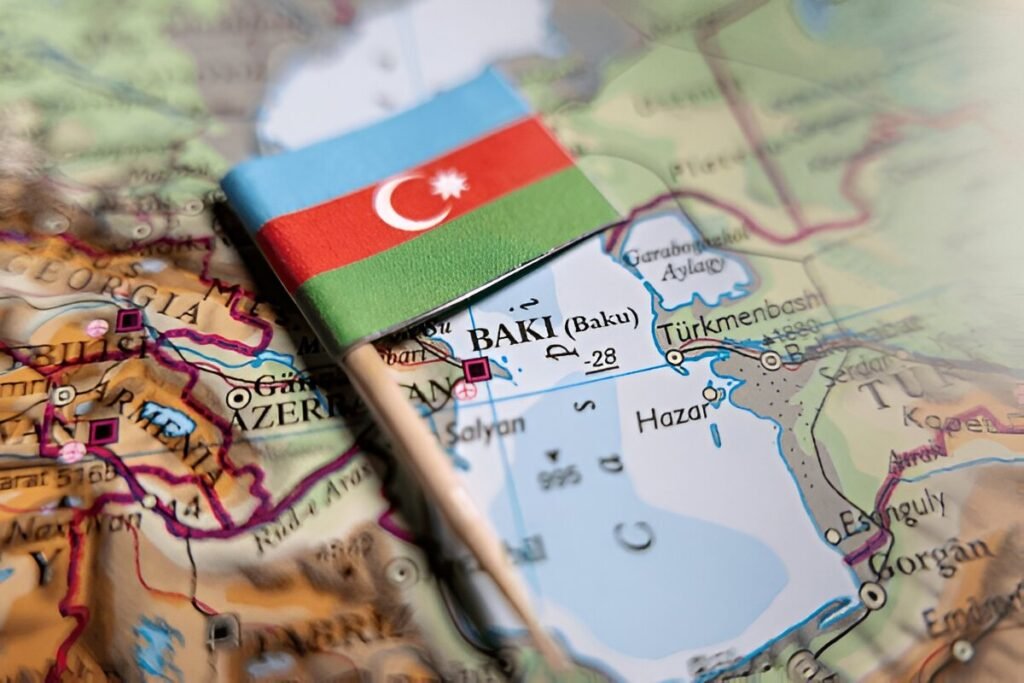Introduction
Azerbaijan’s strategic location at the crossroads of Europe and Asia has played a pivotal role in shaping its history, particularly as part of the Silk Road. This ancient network of trade routes, which connected the East to the West, was instrumental in the exchange of goods, cultures, and ideas. Azerbaijan’s role in the Silk Road not only contributed to its economic and cultural development but also established it as a key player in global history. In this blog, we will explore Azerbaijan’s historical significance in the Silk Road and how it continues to benefit from this legacy in the modern world.
What Was the Silk Road?
The Silk Road was a network of interconnected trade routes that spanned over 4,000 miles, linking China with the Mediterranean, and passing through regions like Central Asia, the Middle East, and parts of the Caucasus. The name “Silk Road” comes from the lucrative trade in silk, but the route was also used for trading spices, precious metals, textiles, and other commodities. Beyond trade, the Silk Road facilitated cultural exchanges, spreading religions, scientific knowledge, and technologies between distant civilizations.
Azerbaijan, located between the Caspian Sea and the Caucasus Mountains, became an important link in this trade network, influencing both its culture and economy.
Azerbaijan’s Historical Role in the Silk Road

1. Gateway Between East and West
Azerbaijan’s geographical position made it a critical juncture for trade and cultural exchange. The country’s cities, like Baku, Sheki, and Ganja, were key stopovers for merchants traveling along the Silk Road.
- Baku’s Strategic Importance:
Located on the Caspian Sea, Baku was a hub for maritime trade. It connected goods from Central Asia, Persia, and even India, to Europe via the Caucasus and the Black Sea. The city’s strategic port attracted merchants from various cultures, leading to a blend of ideas, customs, and products. - Cultural Melting Pot:
The influx of traders and travelers from different parts of the world resulted in a vibrant fusion of cultures, languages, and religions. Azerbaijan became a melting pot for the exchange of not only goods but also art, literature, and technology.
2. Cultural Exchange Along the Route
The Silk Road was not just a trade route but a bridge for the dissemination of ideas, religion, and technology. Azerbaijan’s location ensured that it was at the forefront of this exchange.
- Religious Spread:
The spread of Islam, particularly through Central Asia and Persia, reached Azerbaijan, where it became the dominant religion. However, the region was also influenced by Zoroastrianism and Christianity due to the presence of diverse communities. - Scientific and Technological Exchange:
The Silk Road facilitated the transfer of scientific knowledge, such as astronomy, mathematics, and medicine, from civilizations like China and Persia. Azerbaijan, home to great scholars like Nasir al-Din al-Tusi, played an essential role in preserving and advancing these ideas.
3. Economic Prosperity
Trade along the Silk Road brought immense wealth to Azerbaijan. The caravans passing through the region carried goods like silk, spices, cotton, and precious gems, which were traded for products from Europe and China.
- Caravanserais:
The construction of caravanserais (inns for travelers) along the Silk Road route became common in Azerbaijan. These structures served as resting places for merchants and provided a sense of security during long journeys. They were key to the flourishing of trade, providing not only shelter but also fostering cultural exchanges. - The City of Shamakhi:
Shamakhi, once an important Silk Road city, was a major center of trade and craftsmanship. It was renowned for its carpets, textiles, and ceramics, which were prized across the route. The city’s bazaar became a symbol of the bustling trade networks connecting East and West.
Azerbaijan’s Legacy and Continued Influence

1. Azerbaijan as a Cultural Crossroads Today
The Silk Road left a lasting legacy in Azerbaijan that is still visible today. The country’s diverse population, comprising various ethnicities and religions, is a testament to its historical role as a cultural crossroads.
- Architectural Wonders:
Azerbaijan’s architectural landmarks, such as the Maiden Tower in Baku and the Shirvanshah’s Palace, reflect the influence of both Eastern and Western architectural styles. These sites continue to attract tourists interested in the country’s diverse heritage. - Cuisine and Arts:
Azerbaijan’s cuisine, with its mix of Persian, Turkish, and Central Asian influences, offers a glimpse into the country’s role in the exchange of culinary traditions along the Silk Road. Traditional arts, such as carpet weaving and pottery, remain central to Azerbaijani culture and continue to be passed down through generations.
2. Azerbaijan’s Modern Connection to the Silk Road
Azerbaijan’s historic ties to the Silk Road have shaped its modern economy and foreign policy. The government is actively working to revive this legacy by investing in infrastructure and strengthening trade links with neighboring countries.
- The Baku-Tbilisi-Kars Railway:
This modern rail link between Azerbaijan, Georgia, and Turkey is often referred to as the “New Silk Road.” It aims to reconnect Azerbaijan with the international trade routes that once passed through the region, facilitating the movement of goods from Asia to Europe. - Baku as a Trade Hub:
Baku continues to serve as a regional trade hub, connecting Central Asia, the Caspian region, and Europe. The city’s modern port infrastructure and strategic location make it a key player in global trade and a vital link between East and West. - Cultural Diplomacy and Tourism:
Azerbaijan is also leveraging its Silk Road legacy to promote cultural tourism. The country’s ancient Silk Road cities, such as Shamakhi, Ganja, and Sheki, continue to attract travelers interested in exploring the rich history and cultural heritage of the region.
Why Azerbaijan’s Role in the Silk Road Matters Today

- Economic Growth and Global Connectivity:
Azerbaijan’s focus on reviving the Silk Road trade routes through initiatives like the Baku-Tbilisi-Kars railway is helping to boost its economy and strengthen its global connections. - Cultural Exchange and Cooperation:
Azerbaijan’s historical role as a melting pot of cultures continues to foster cross-cultural dialogue and cooperation in the modern world. The Silk Road legacy serves as a foundation for enhancing ties with neighboring countries and international partners. - Tourism and Heritage Preservation:
By promoting its Silk Road heritage, Azerbaijan attracts tourists from around the globe, helping to preserve and protect the cultural sites that played a key role in the region’s history.
Conclusion
Azerbaijan’s role in the ancient Silk Road was not just about commerce—it was a conduit for the exchange of ideas, cultures, and knowledge between East and West. The country’s historical position has shaped its identity and continues to influence its modern-day development.
Today, Azerbaijan is reconnecting with its Silk Road legacy through infrastructure projects, tourism initiatives, and cultural diplomacy. As a bridge between continents, Azerbaijan’s role in the Silk Road remains as relevant as ever, proving that the journey of trade, knowledge, and cultural exchange is far from over. Whether through historical landmarks or modern trade routes, Azerbaijan continues to be a vital link in the world’s ever-evolving network.












